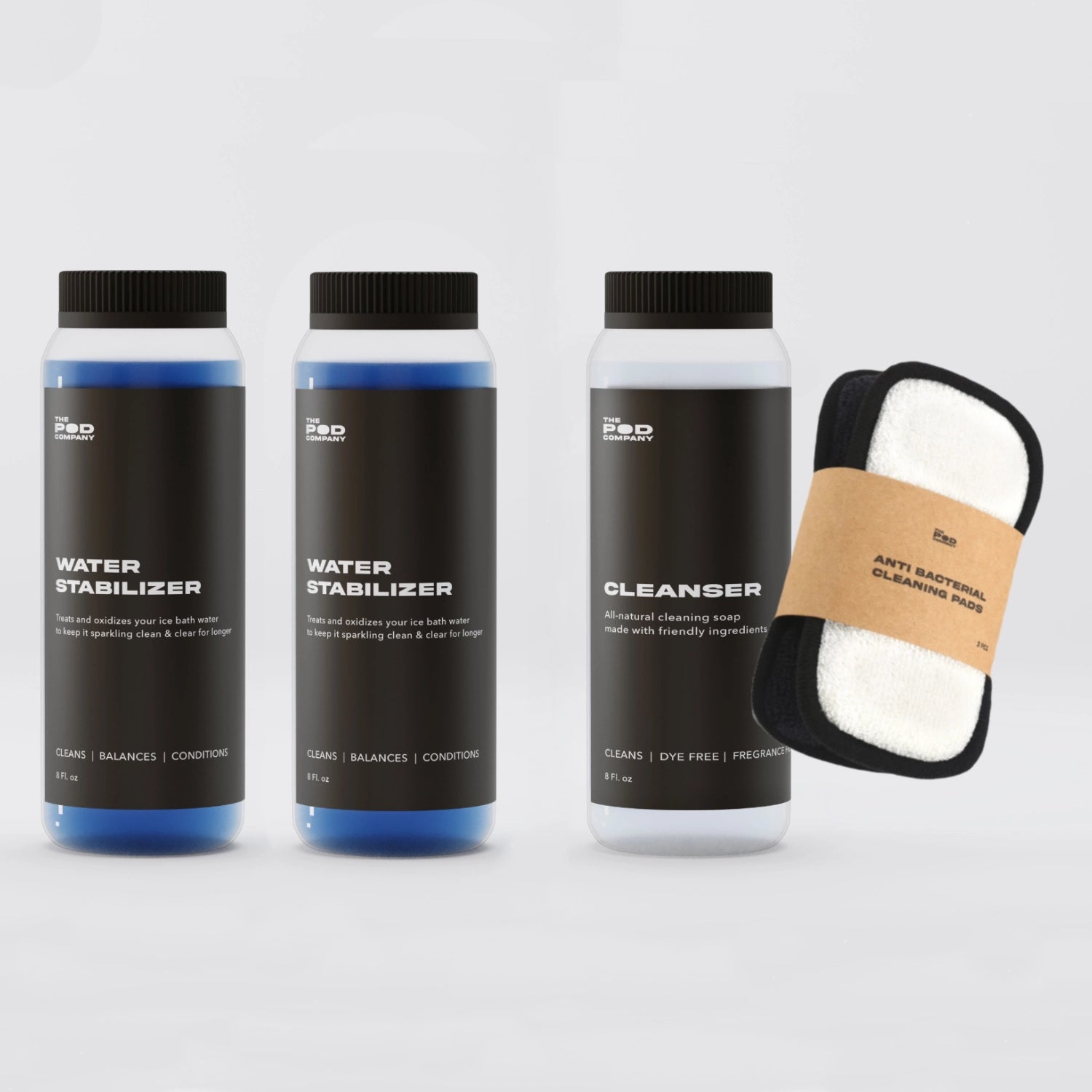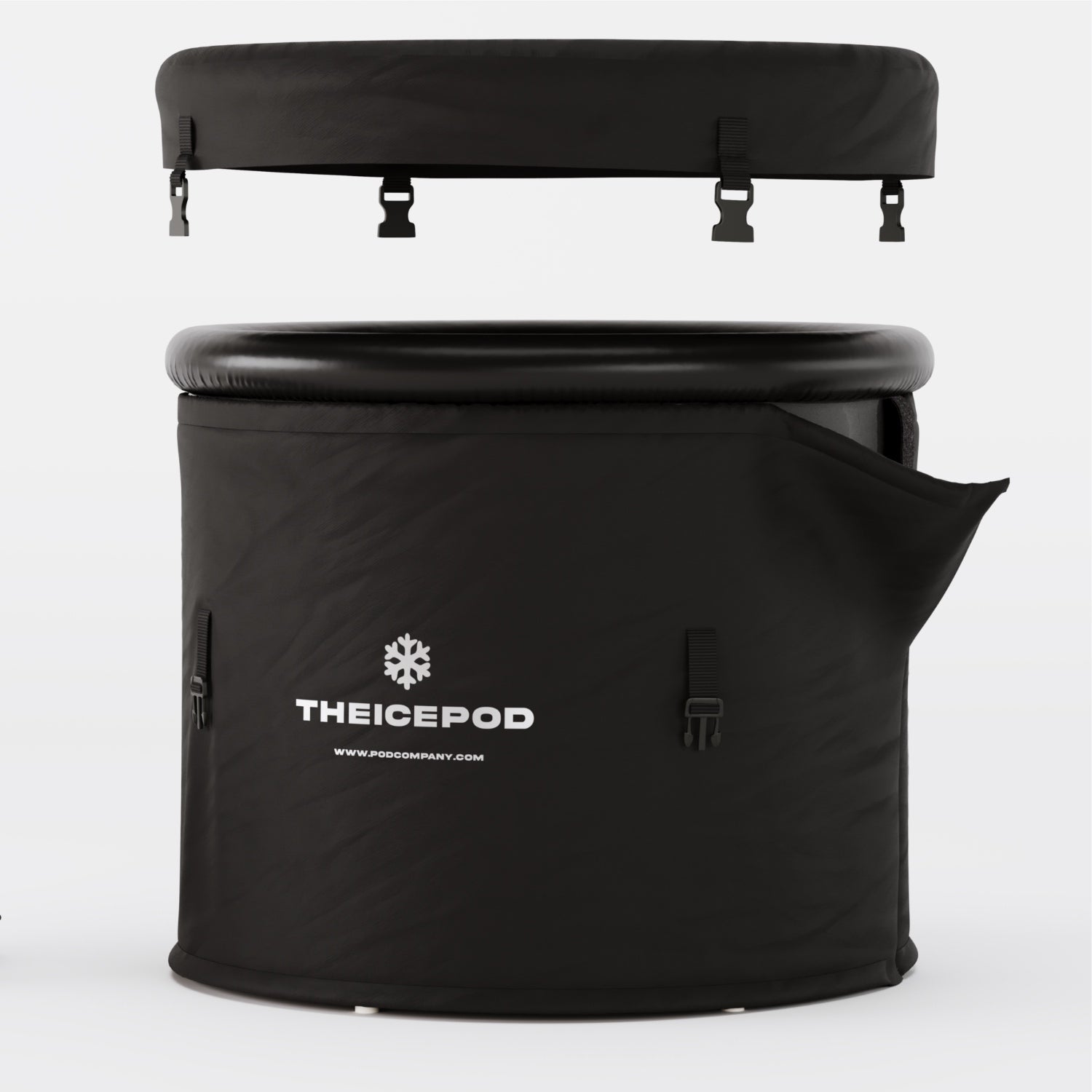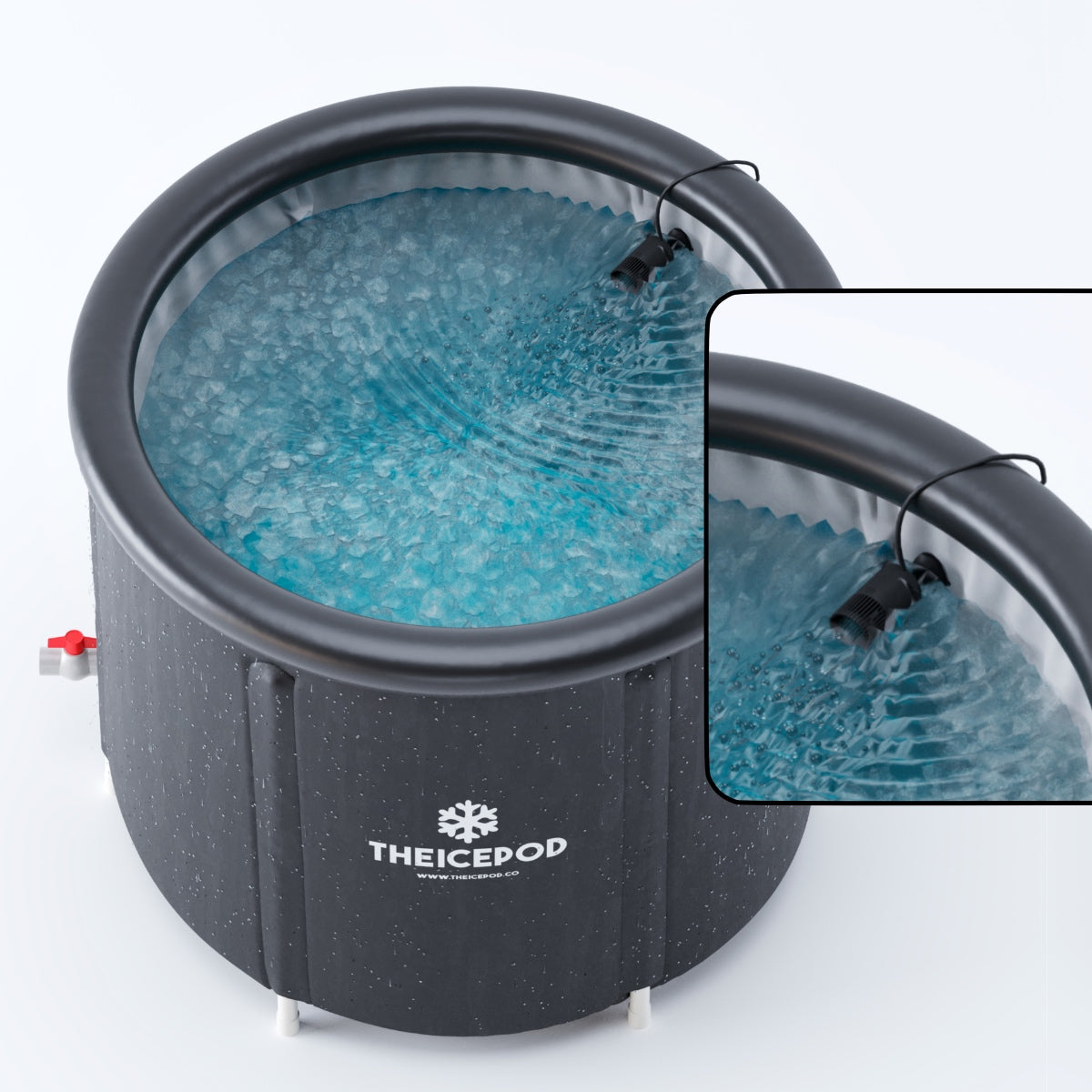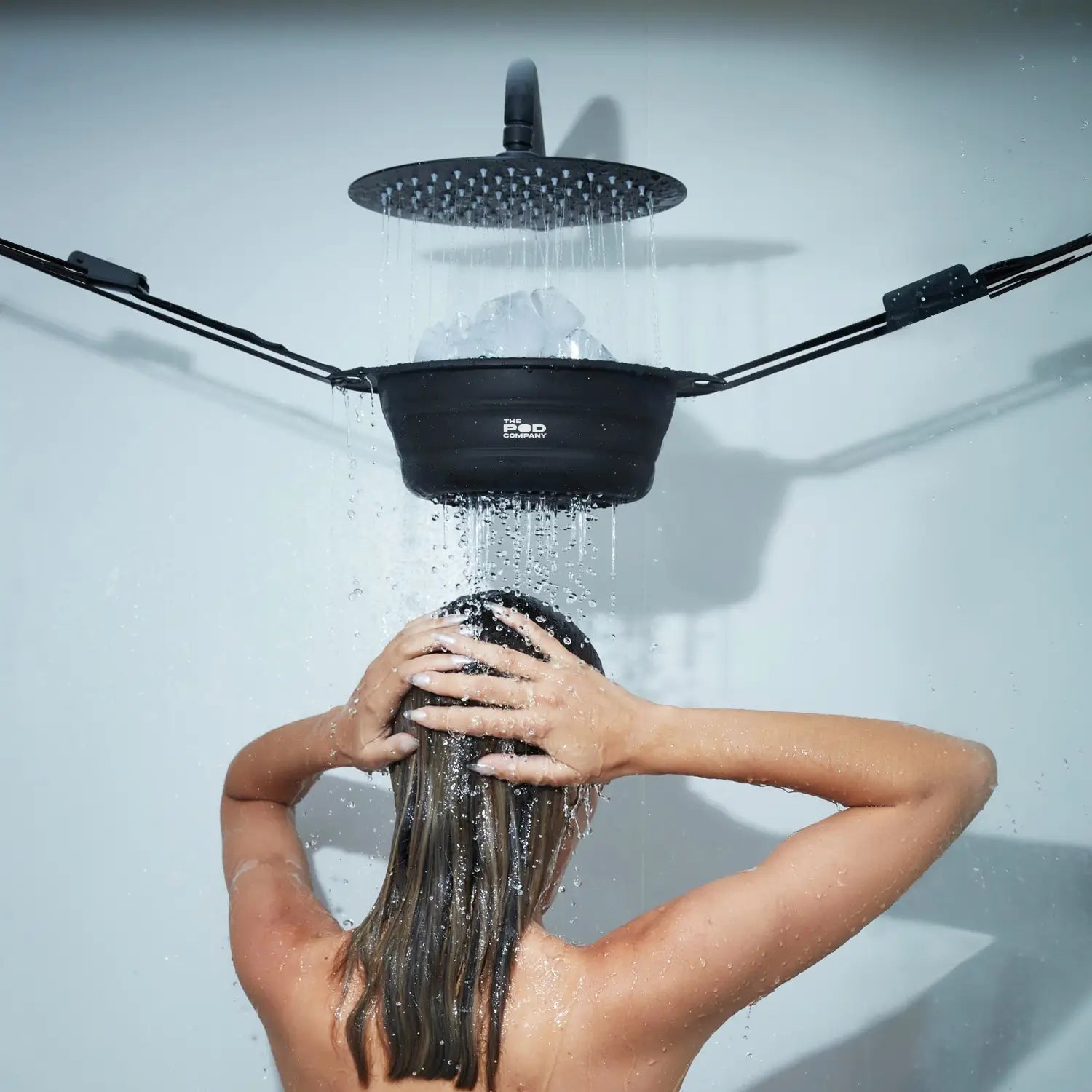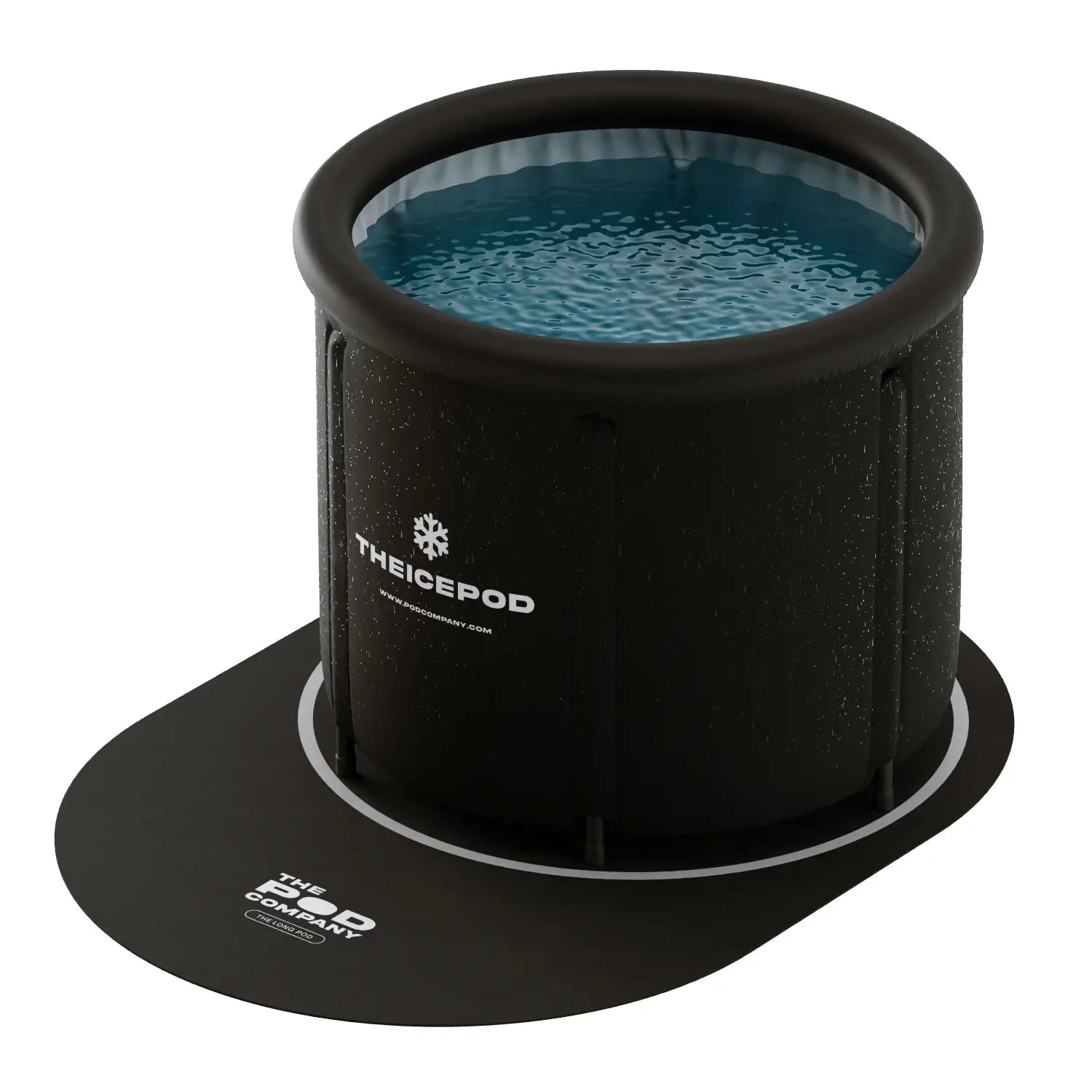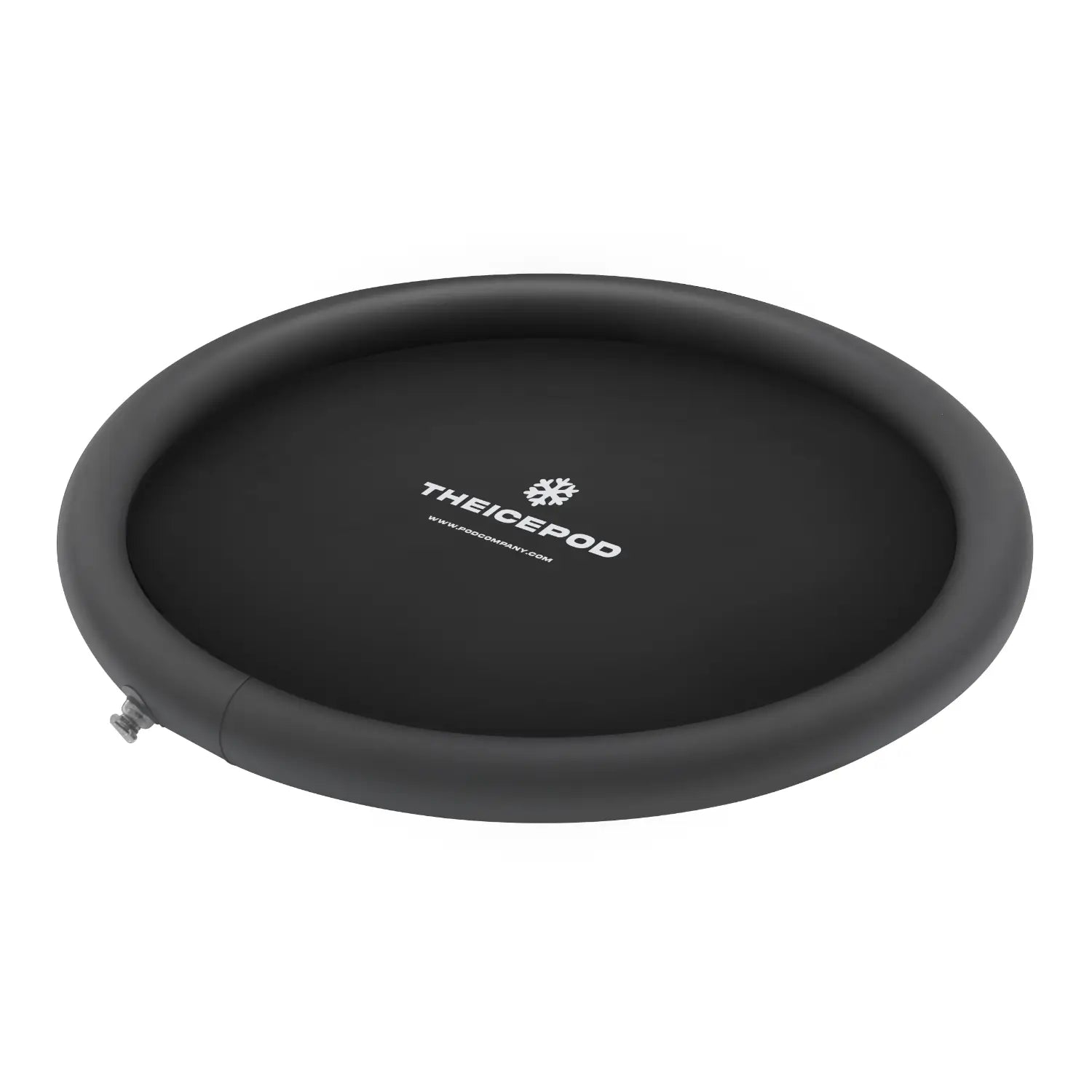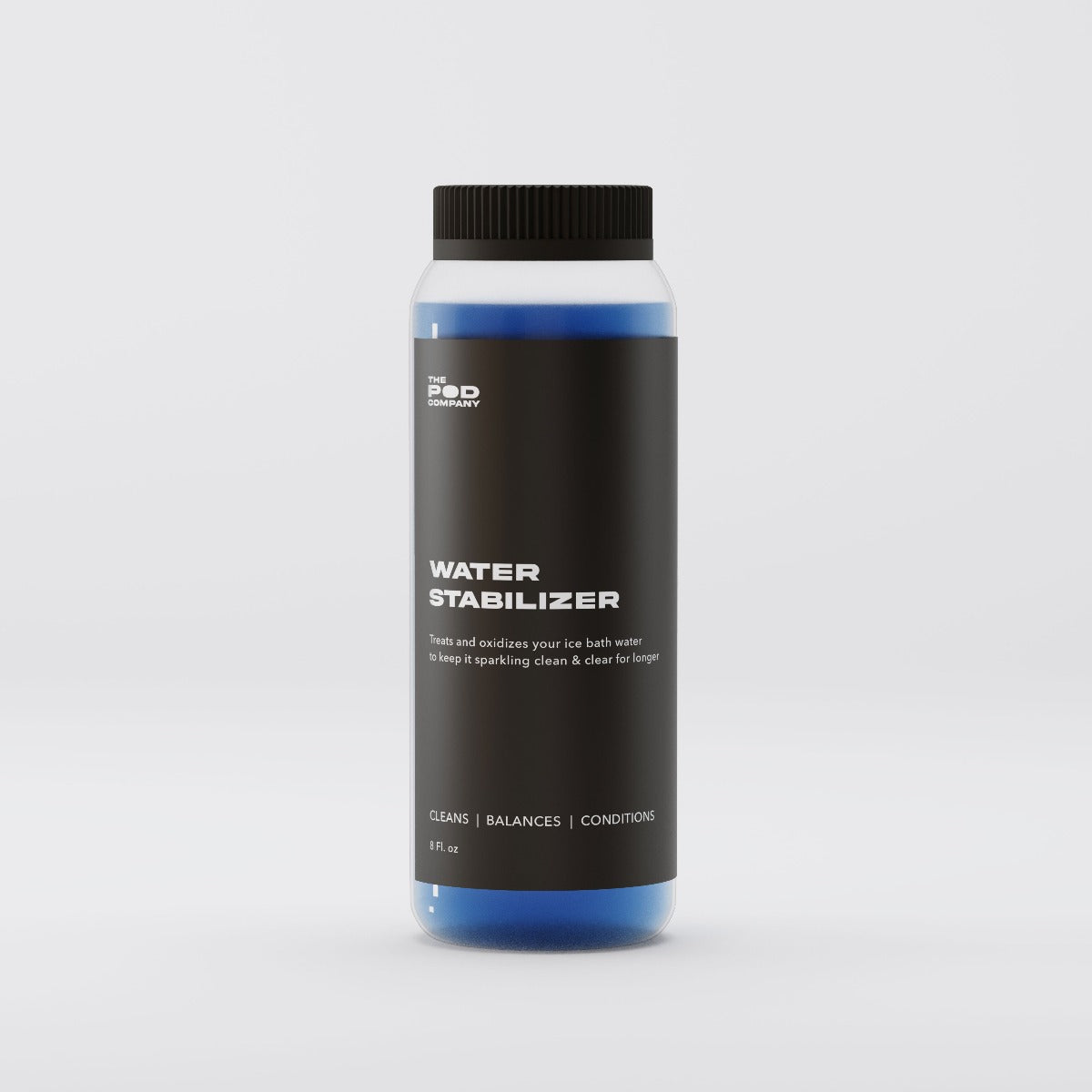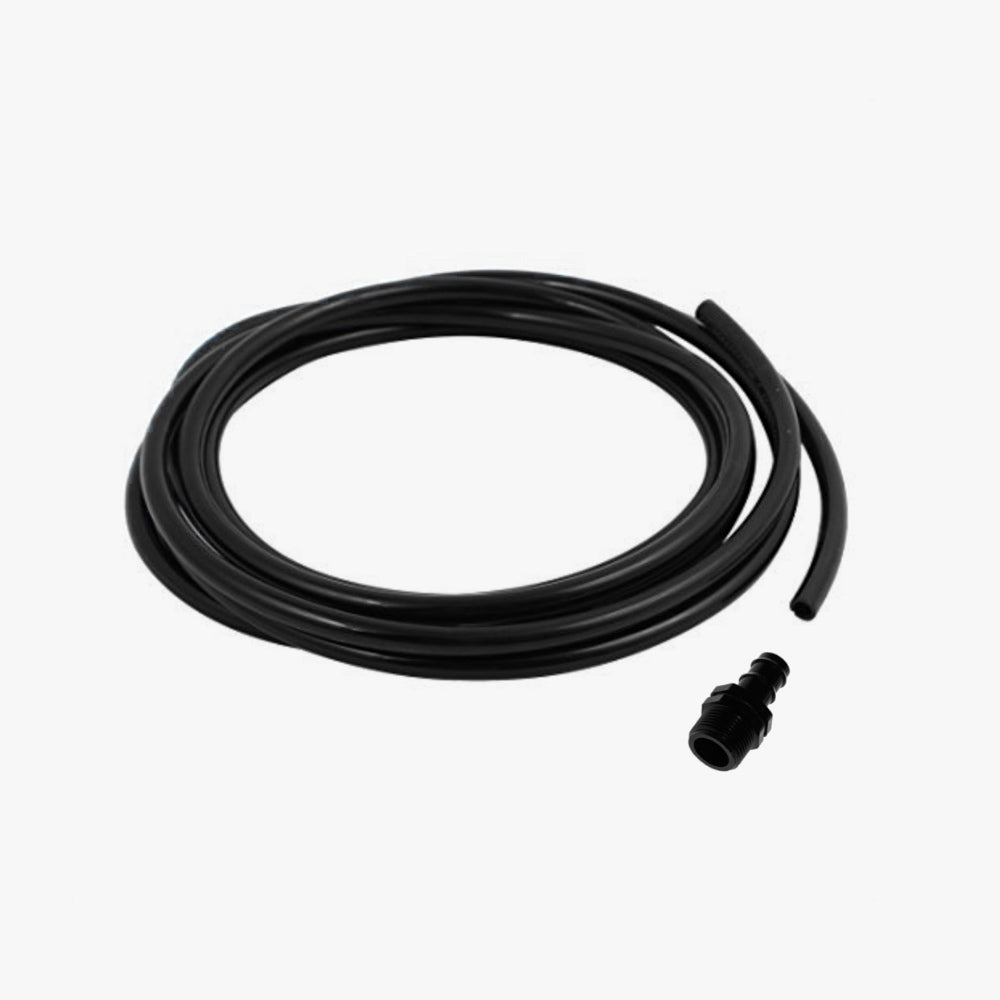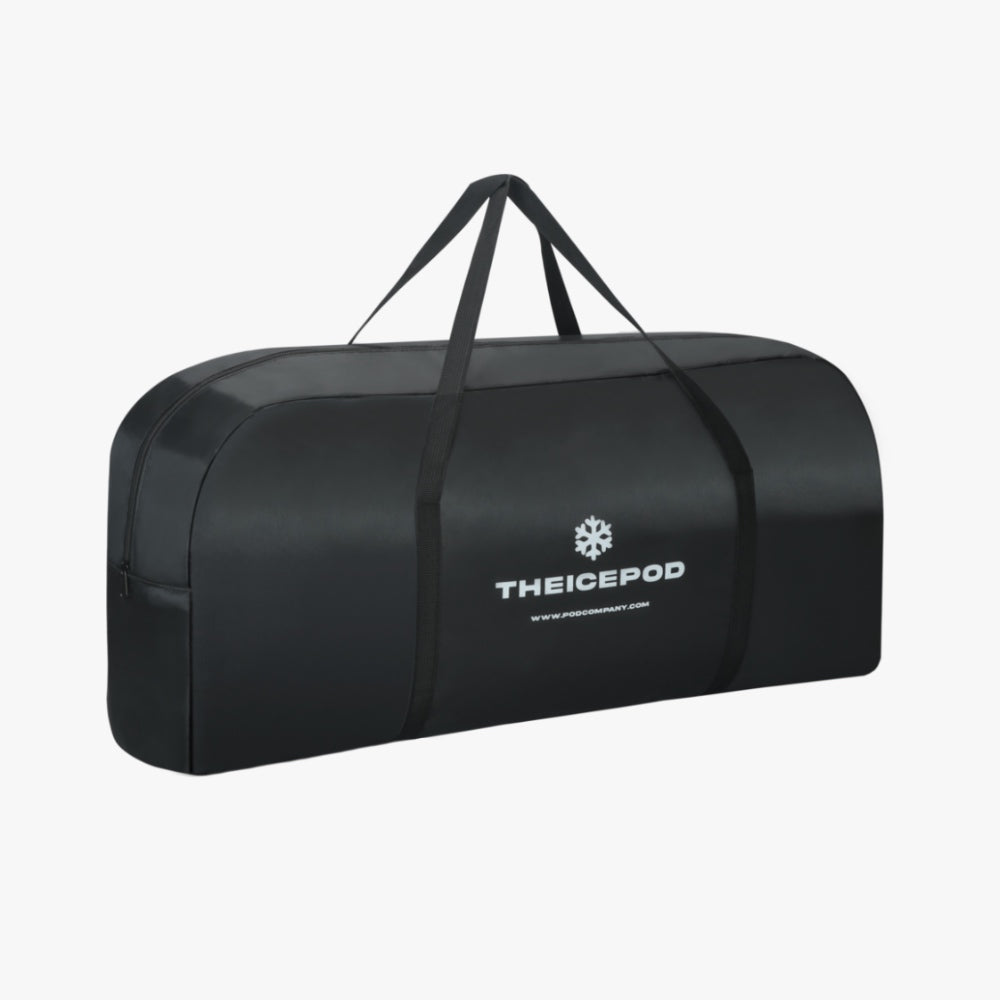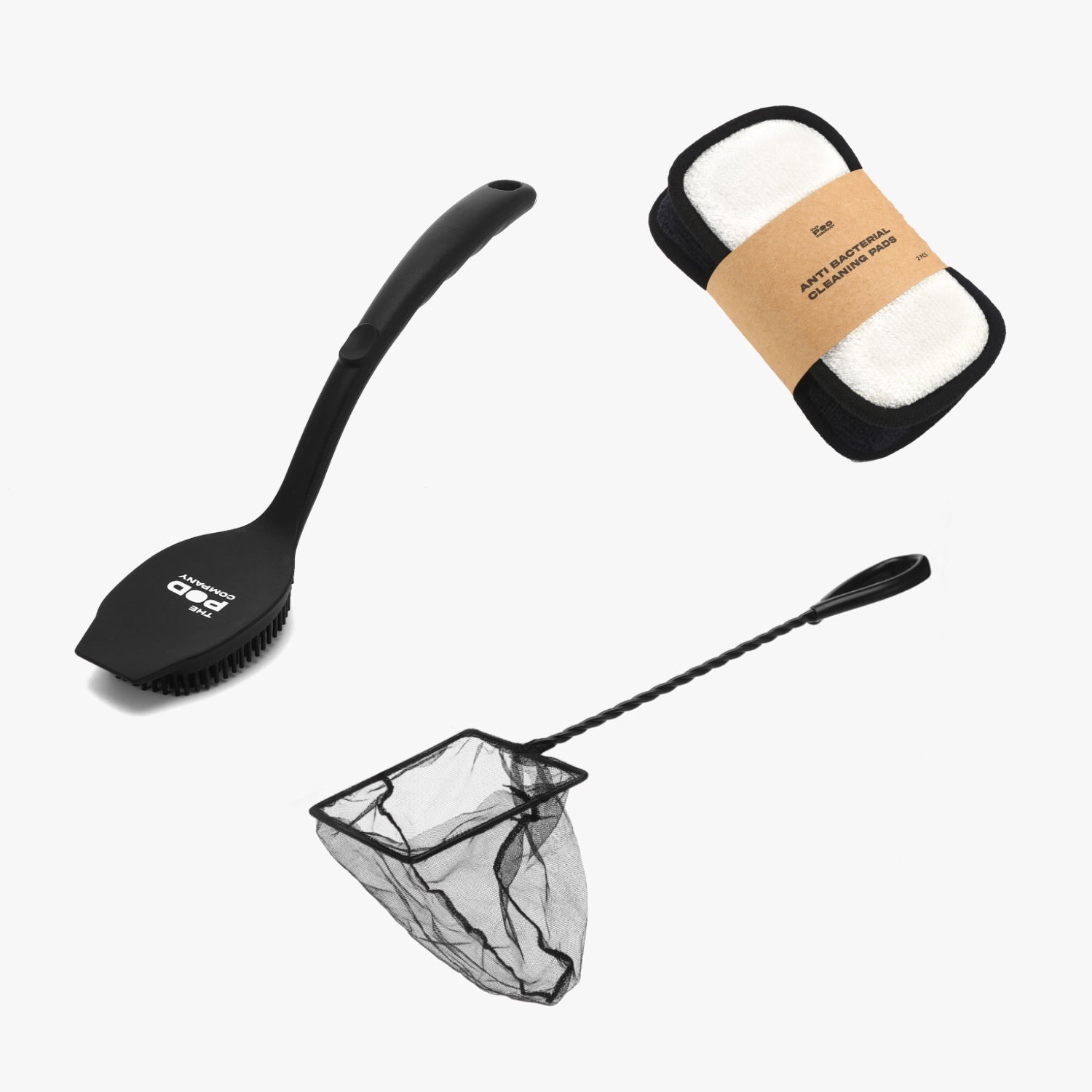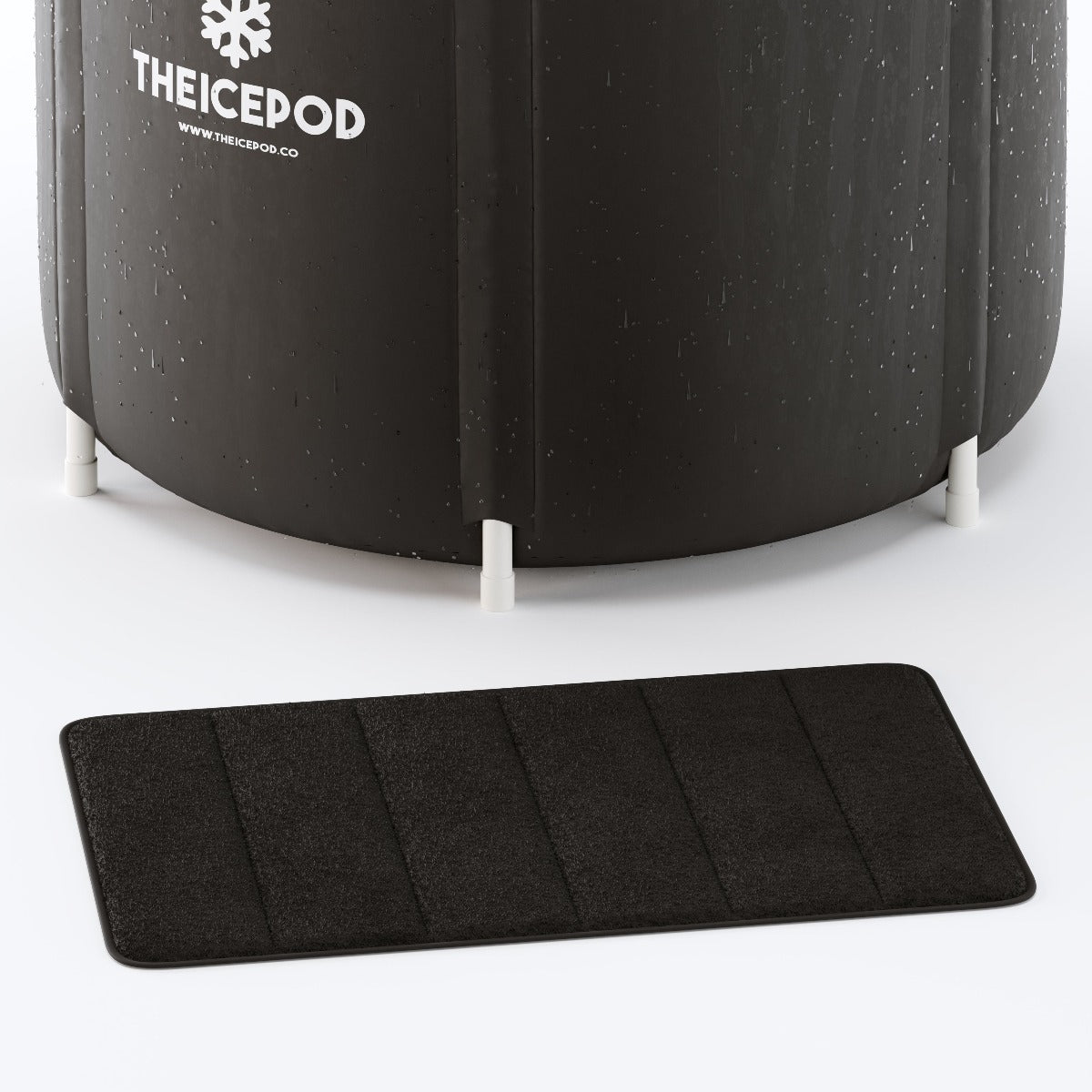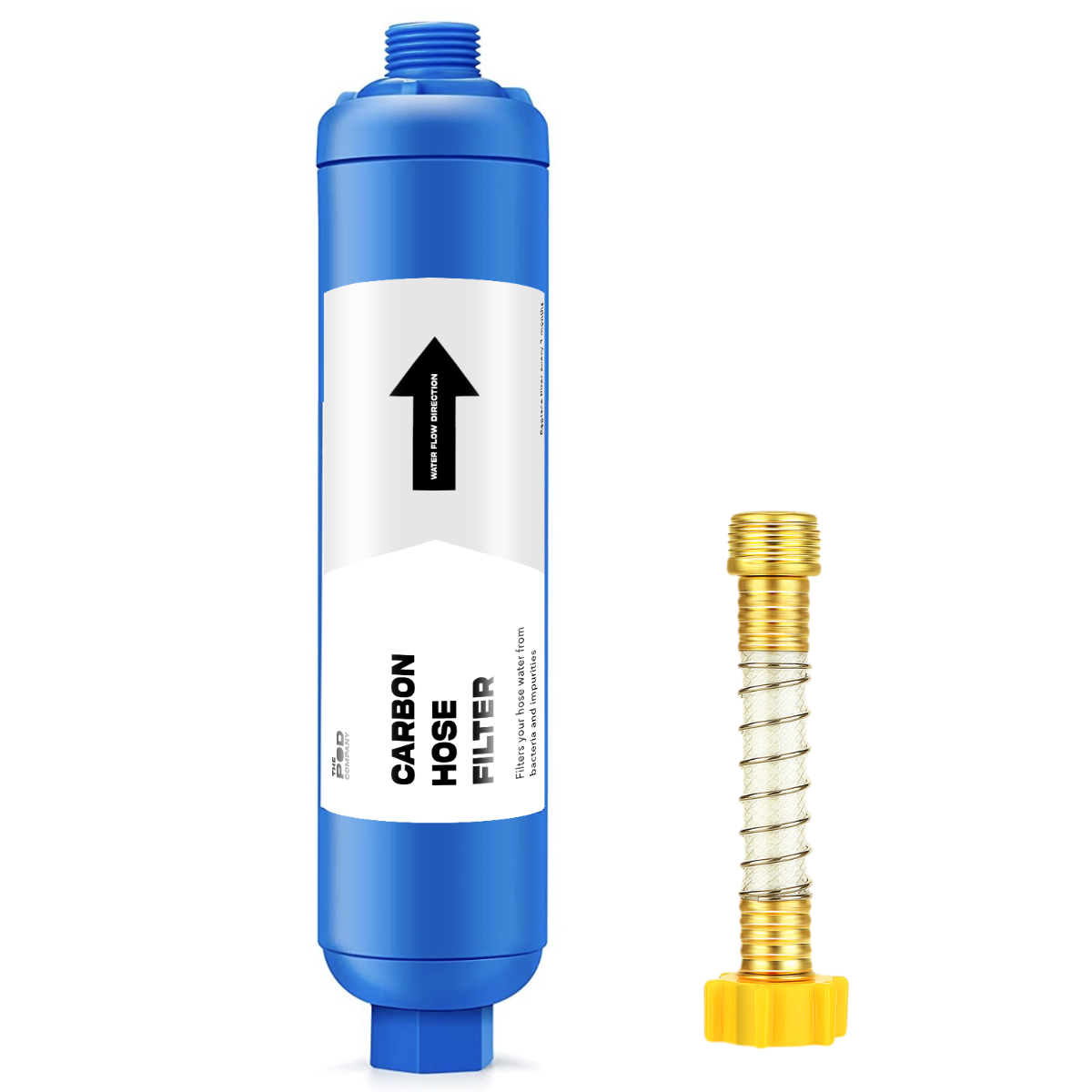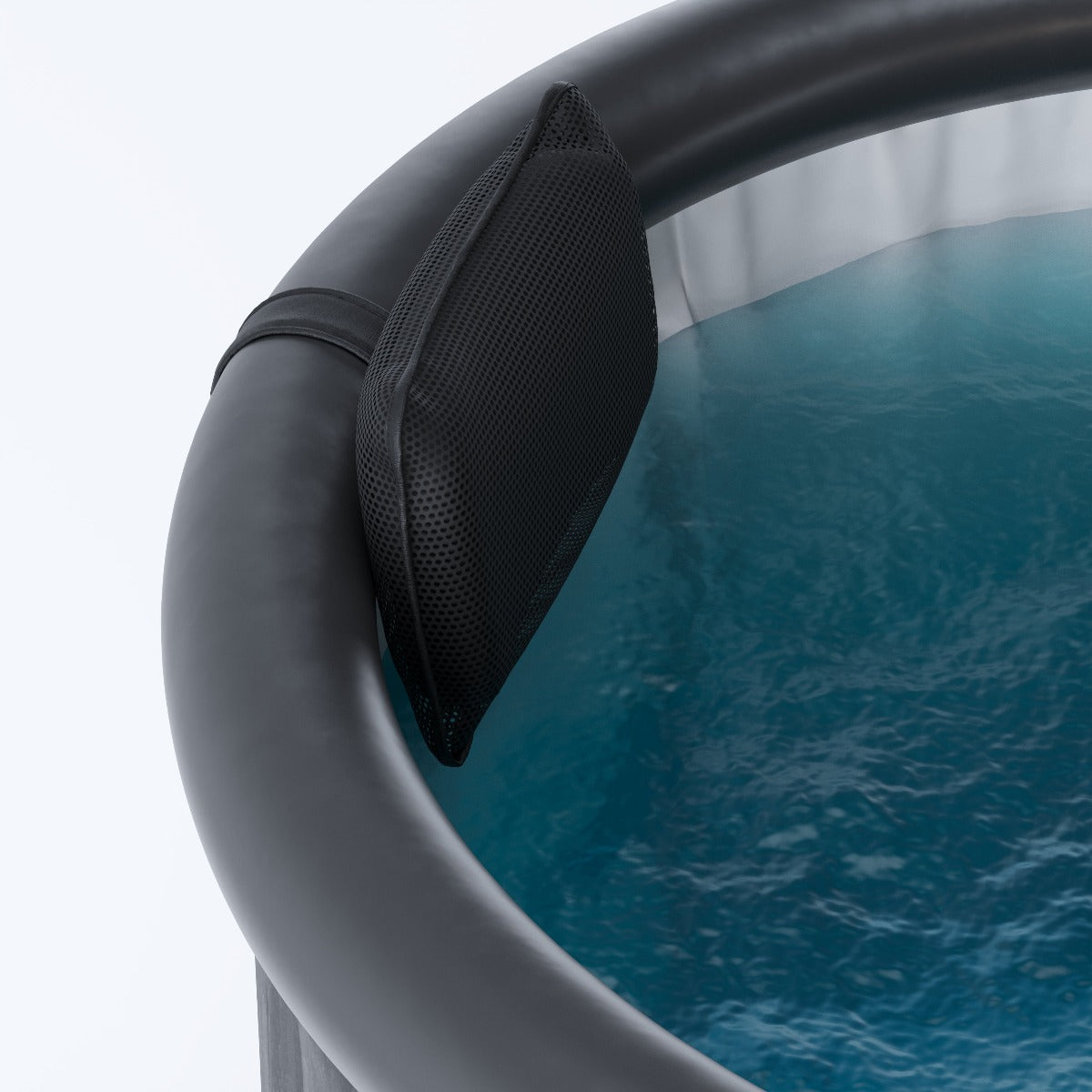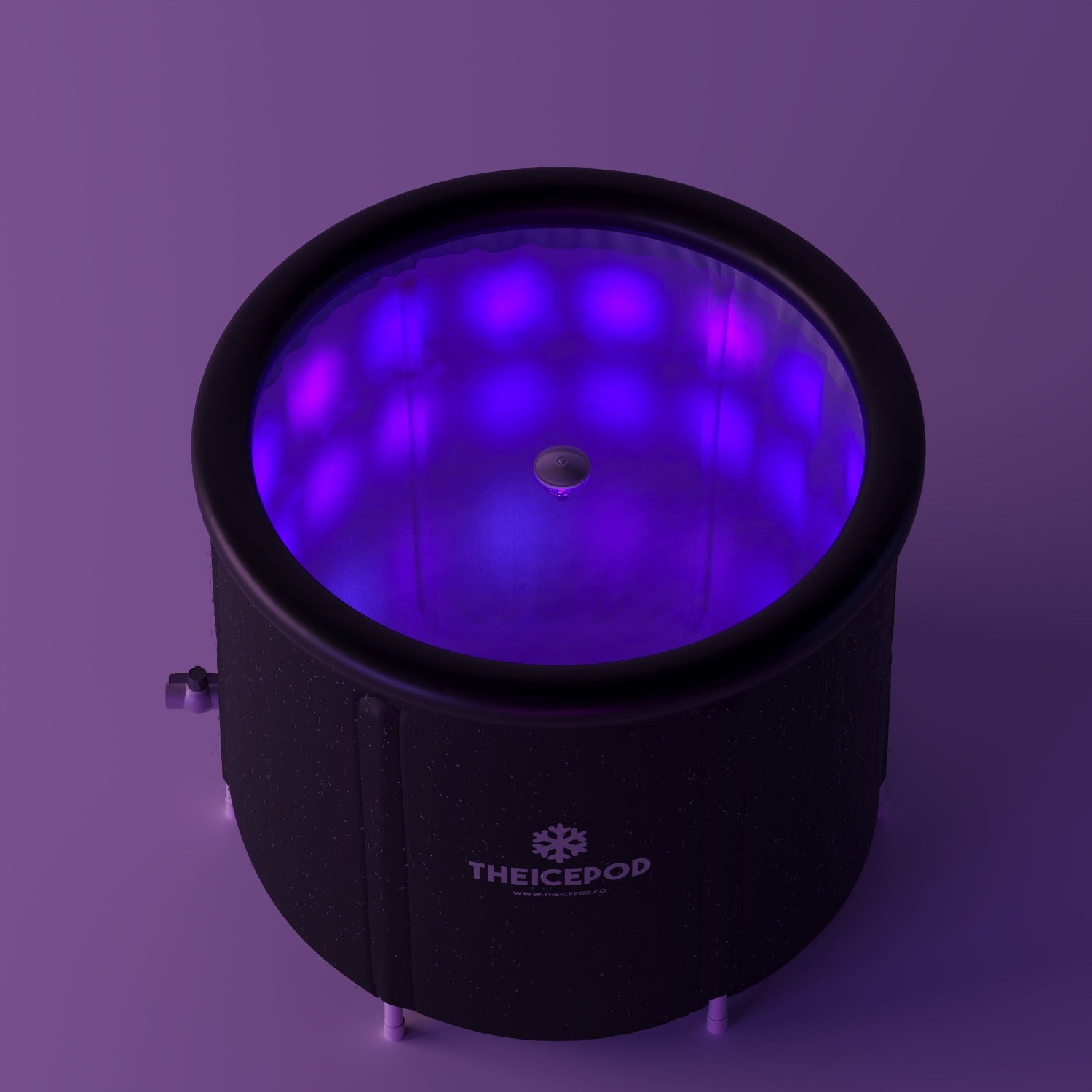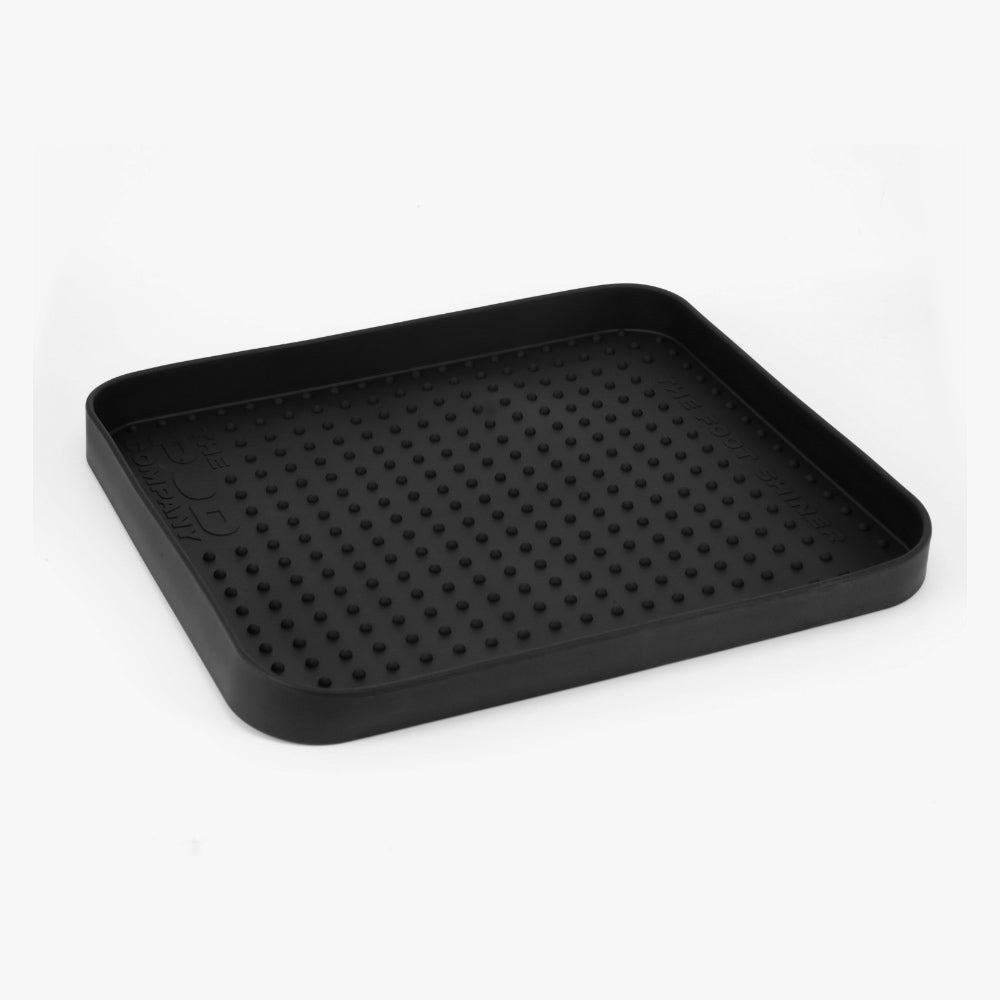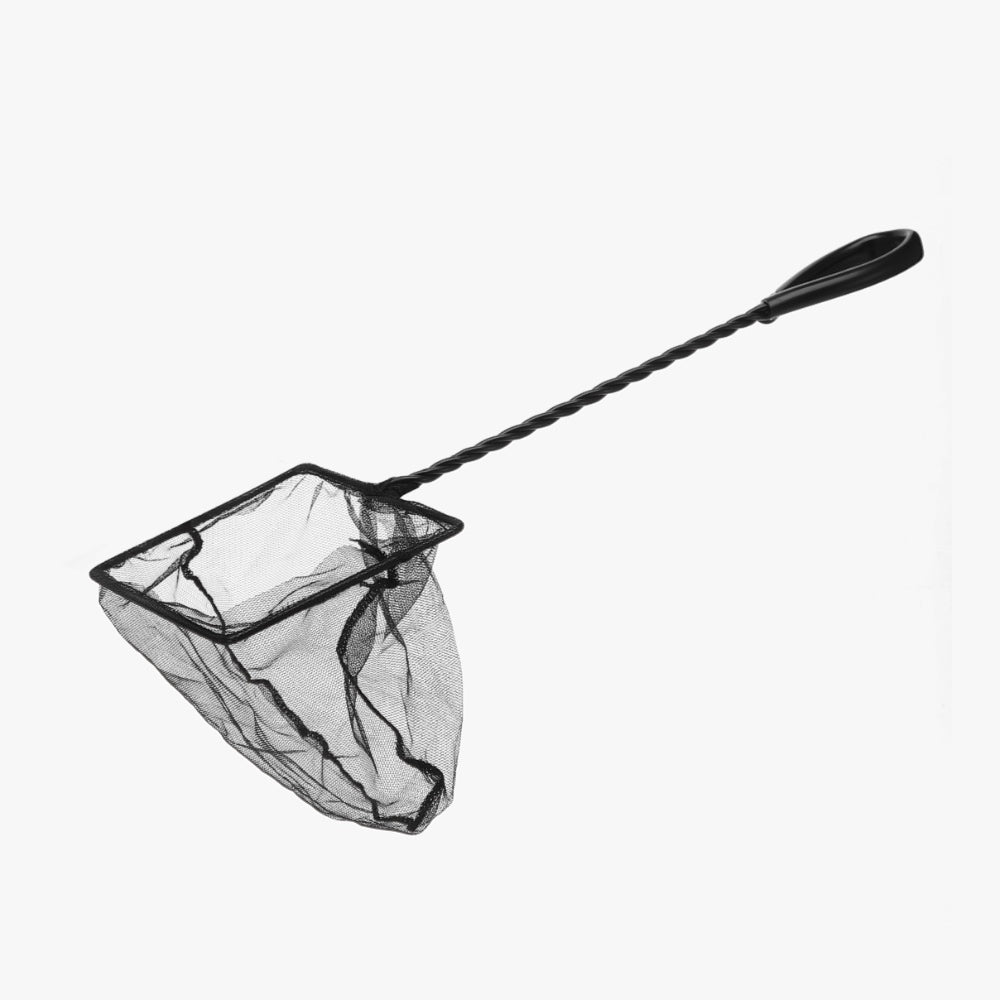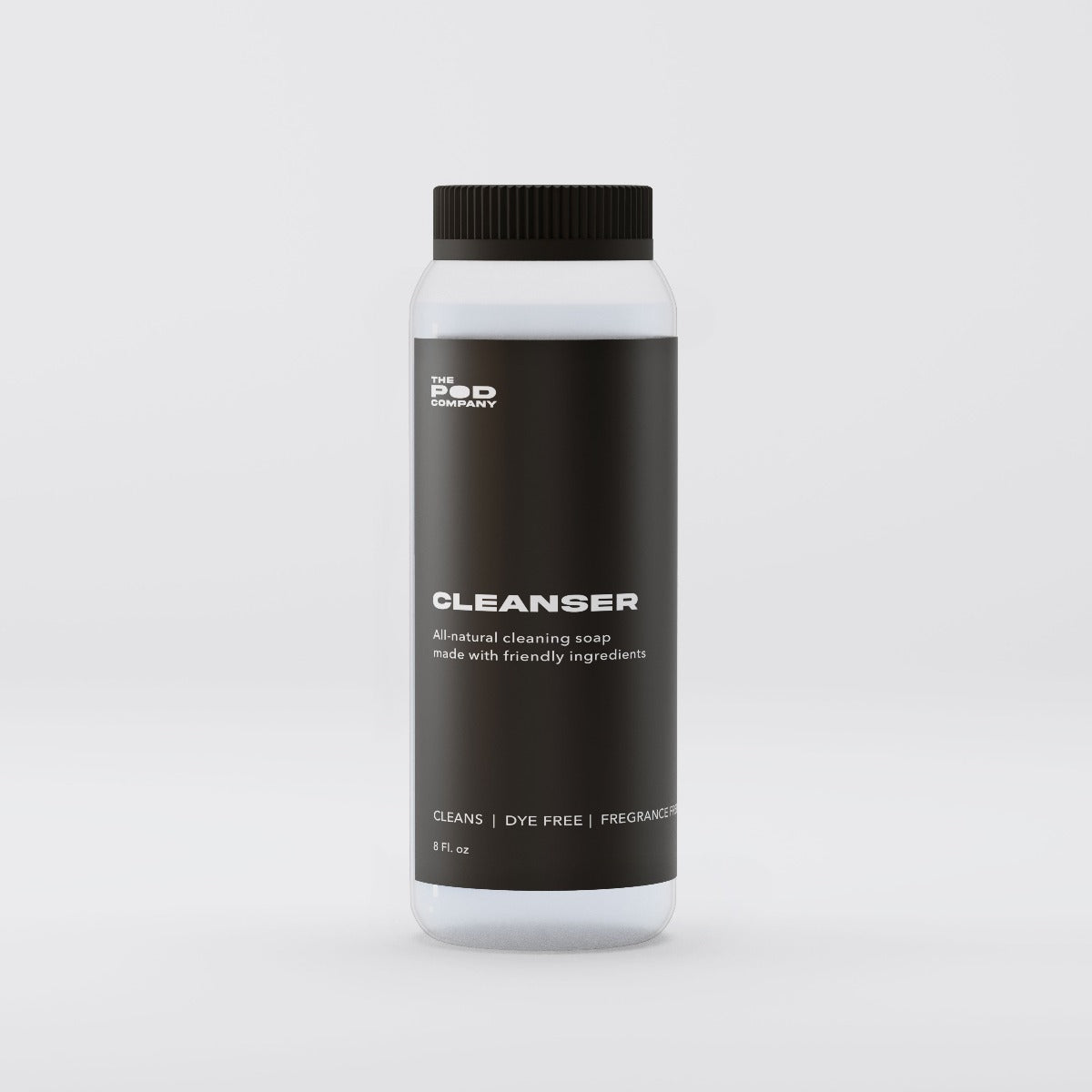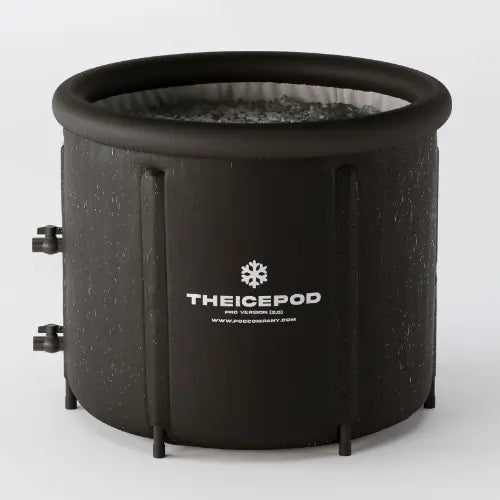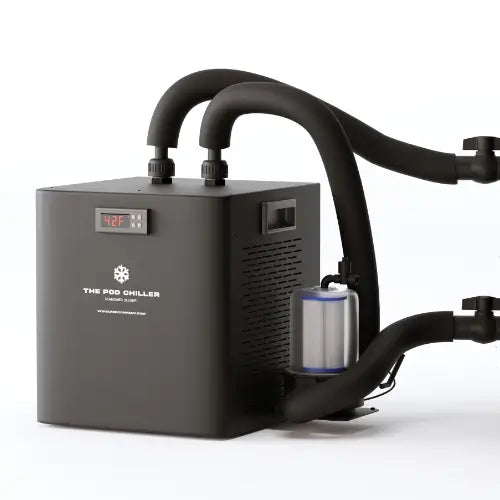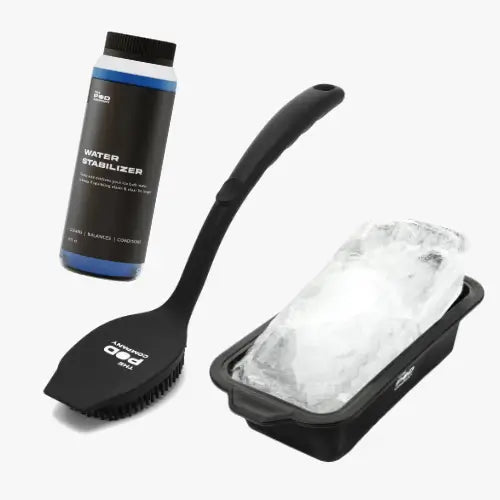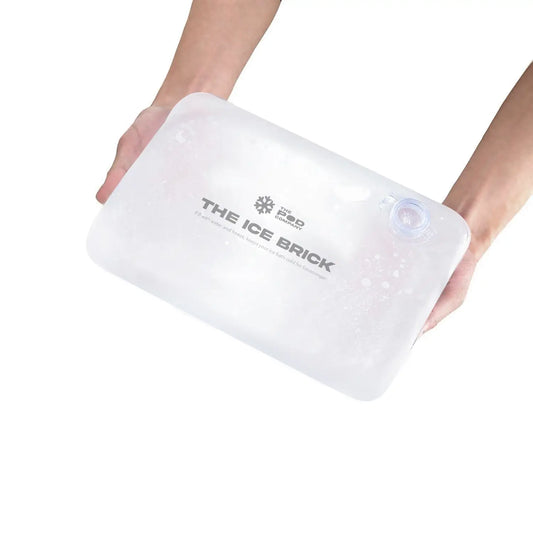When it comes to post-workout recovery, there aren’t many things better for your body than an exhilarating ice bath. The perfect ice bath can reduce inflammation, accelerate muscle recovery, and alleviate soreness.
The extremely cold temperature of the water constricts blood vessels, limiting the inflammatory response and promoting the removal of metabolic waste products from the muscles. Plus, the shock of cold exposure triggers the release of endorphins, providing pain relief and feelings of euphoria that will have you floating through the day.
Unfortunately, you can’t just throw some ice in your tub and expect to get these benefits. A proper ice bath needs to be maintained within a very specific temperature range, or you won’t see the many physical and mental health benefits from your ice bath.
So, how cold should an ice bath be, and what’s the perfect temperature of an ice bath? In this article, we’ll teach you everything you need to know about the best ice bath temperature ranges, including how to maintain your tub at the right temperature. This way, you will be able to unlock the benefits of this incredible therapy and won’t waste your time and money on an ice bath that isn’t doing you any good.
And if you’re looking for an affordable, simple way of adding ice bath therapy to your life, check out our #1 ice bath tubs for sale!
Why the Ideal Temperature of an Ice Bath Matters So Much
You might be thinking, isn’t an ice bath an ice bath? How much can the temperature change, and why does it even matter? Let’s take a look at the science behind cold water therapy and why it’s so important to keep the temperature of an ice bath within the optimal range.
The Science of Cold Exposure
When immersed in cold water, the body experiences vasoconstriction, a process where blood vessels constrict, reducing blood flow to the extremities and directing it toward vital organs. This constriction helps minimize inflammation and swelling, which often occurs as a result of intense physical activity, and can cause pain and slow down your recovery time.
Cold exposure also activates the body's natural thermoregulatory mechanisms. The sudden drop in temperature triggers a response from the sympathetic nervous system, resulting in increased heart rate, oxygen consumption, and metabolic rate. These responses help the body generate heat to maintain its core temperature and preserve essential bodily functions.
Cold exposure also stimulates the release of endorphins, known as the "feel-good" hormones. These endorphins can provide a sense of euphoria, relaxation, and pain relief, further enhancing your overall well-being and mental state during and after an ice bath. Moreover, it can even help you lose excess fat and weight, and if you’re already using a sauna for weight loss, it will amplify its effects.
Balancing Benefit, Comfort, and Safety
When it comes to the ideal temperature of an ice bath, it’s important to strike a balance. You need to find a temperature that brings the ice bath benefits to you, but one that doesn’t cause you any harm or discomfort. If temperatures are too low, you might not enjoy your ice bath, or could even develop serious conditions like frostbite or hypothermia.
By finding the optimal temperature of an ice bath, you can reap the benefits of cold water immersion while ensuring a comfortable and safe experience. Striking this balance also makes it easy to incorporate ice baths into your daily recovery routine, which can enhance your performance and reduce muscle soreness.
Factors Influencing Your Optimal Ice Bath Temperature Range
There are a few different things you have to keep in mind when it comes to the perfect temperature of an ice bath. Here are some of the factors that influence the optimal ice bath temperature range.
Personal Cold Tolerance
Cold tolerance can vary significantly from person to person and is influenced by your body composition, metabolism, and previous exposure to cold temperatures. Some people may find lower temperatures more tolerable and even enjoyable, while others may prefer a slightly higher temperature for ice bath.
Your Health Status
Your health status and any underlying medical conditions also need to be factored in when you’re deciding how cold should an ice bath be. Certain conditions like Raynaud's disease or cardiovascular issues can affect how your body responds to cold exposure.
Pregnant women, anyone with impaired circulation, and those with compromised immune systems should be extra careful with cold water immersion therapy. Ask your doctor if you have any concerns or pre-existing health conditions that may impact your ability to tolerate cold temperatures.
Your Goals for Cold Therapy
Defining your specific goals for cold therapy also helps you establish the best temperature for ice bath for your needs. Different temperature ranges can have varying effects on the body, and selecting the range that aligns with your desired outcomes is crucial.
For example, if your main goal is reducing inflammation and promoting muscle recovery, a temperature range of 50 to 59 degrees Fahrenheit may be best. On the other hand, if your focus is on improving mental well-being and relaxation, slightly higher temperatures within the range of 60 to 68 degrees Fahrenheit might be preferred.
So, How Cold Should an Ice Bath Be? The Best Ice Bath Temperature Explained
How cold should an ice bath be, really? Let’s take a look at your optimal ice bath temperature range.
General Recommendations for the Ideal Temperature For Ice Bath
While the optimal temperature for an ice bath may vary depending on individual factors, there are general recommendations to consider. Between 50 and 59 degrees Fahrenheit is commonly suggested by experts and supported by research for maximizing the benefits of cold water immersion therapy.
Within this range, the water is sufficiently cold to induce vasoconstriction, reduce inflammation, and promote muscle recovery. It also tends to be well-tolerated by most people, especially after some practice. Just remember that your personal preferences, cold tolerance, and health considerations should always be taken into account when determining the exact temperature within this range that suits you best.
Adjusting Cold Plunge Temperature Based on Your Goals
The specific temperature within the recommended range can be adjusted based on your goals for cold therapy. To promote muscle recovery and reduce post-exercise inflammation, choosing temperatures on the lower end of the range (around 50-54 degrees Fahrenheit) may be more beneficial.
How cold should an ice bath be for mental relaxation, stress reduction, or improving overall well-being? Slightly higher temperatures within the range (around 55-59 degrees Fahrenheit) are usually recommended for mental health benefits. These temperatures can still provide the benefits of cold water immersion while ensuring a more comfortable and enjoyable experience.
The Role of Gradual Adaptation
It’s important to listen to your body and gradually acclimate to colder temperatures, especially if you are new to ice baths. Starting with a temperature slightly higher than the recommended range and gradually decreasing it over time can help you build up your cold tolerance and experience the benefits of cold water immersion more safely and effectively.
Tips for Maintaining the Proper Ice Bath Temperature Range
As well as understanding how cold should an ice bath be, it’s important to know how to keep your ice bath within this temperature range, so that you’re not constantly adjusting the temperature or using an ice bath when it’s too cold or not cold enough. Here’s what you need to know about maintaining your temperature for ice bath.
Choose Your Cold Plunge Location Wisely
Selecting the right location for your ice bath can help you maintain the desired temperature range throughout your session. Opt for a space that is cool and well-ventilated, away from direct sunlight and sources of heat. This will prevent external factors from impacting the water temperature and help maintain the effectiveness of your ice bath.
Keeping Your Ice Bath Cold With a Quality Tub and Chiller Combo
One of the easiest ways to keep your ice bath at the perfect temperature is to use a portable ice bath along with an ice bath water chiller. This way, you don’t need to constantly add ice to your tub, which can cause dramatic temperature fluctuations and make your ice bath unsafe to use.
At Pod Company, we have the most affordable, best ice bath tub that’s perfect for at-home cold therapy. Our Ice Pod is 100% portable, can be set up in just a few minutes, and well insulated to maintain optimal ice bath temperature.
Make your Ice Pod even more effective by investing in our water chiller - the most affordable on the market! This chiller rapidly cools your water down in no time at all, ensuring your ice bath is ready to go whenever you are, without the need for endless bags of ice! Many people don’t realize just how much they’re spending on ice for their tub - your water chiller will quickly pay for itself.
Monitoring the Temperature
Regularly monitoring the water temperature during your ice bath is crucial for ensuring that it remains within the optimal range. Use a reliable thermometer designed for water temperature measurement to accurately assess the cold plunge temperature. Place the thermometer in the water and allow it to stabilize for a few minutes before taking the reading.
By monitoring the temperature, you can make adjustments if necessary and maintain consistency throughout your ice bath session. This will help you achieve the desired therapeutic effects and ensure the safety and comfort of your cold water immersion experience.
Advice on Adjusting Temperature on the Fly
During your ice bath, you may find that the water temperature begins to deviate from the desired range. When this happens, you’ll need to adjust the temperature on the fly. If you do this by adding more ice or cold water, make sure you add small amounts at a time to make sure the temperature doesn’t go too low. If you need to adjust the temperature by more than a few degrees, it may be necessary to drain and refill your ice bath.
An easier way is to use a water chiller that automatically keeps your ice bath cool. At the Pod Company, our energy-efficient chiller works on a thermostat to consistently maintain the best ice bath temperature range at all times.
Along With the Temperature of an Ice Bath, Consider These Other Factors to Maximize Benefits
Whether you’ve learned how to make a cold plunge tub DIY or invested in a pre-made ice bath, here are a couple of other things to keep in mind for getting the most out of your cold therapy sessions.
The Duration and Frequency of Your Ice Baths
While the best ice bath temperature is crucial, the duration and frequency of your sessions are also important in maximizing the benefits. The ideal duration for an ice bath is typically between 10 to 20 minutes, although individual preferences and tolerance may vary.
It's important to understand that longer ice baths don’t necessarily deliver more benefits. In fact, prolonged exposure to extremely cold temperatures may increase the risk of cold-related injuries. If you feel uncomfortable or experience any adverse effects, it's advisable to shorten the duration.
The frequency of your ice baths is also important. It is generally recommended to incorporate ice baths into your routine 1 to 3 times per week, depending on your goals and the intensity of your physical activity. Consistency is key in reaping the benefits of cold water immersion, but be mindful of allowing sufficient recovery time between sessions to avoid overexposure to cold temperatures.
Your Pre- and Post-Bath Routine
To further enhance the effectiveness of your ice bath, consider incorporating a pre- and post-bath routine into your cold water immersion practice.
Before entering the ice bath, try a light warm-up or exercise to increase blood flow to the muscles. This helps prime the body for cold exposure and can enhance the therapeutic effects. Deep breathing or relaxation techniques can also help prepare mentally for the immersion.
After your ice bath, it's important to gradually warm up your body. You can do this by towel-drying and then engaging in gentle movements or light exercises to promote blood circulation. Some people also find contrast therapy beneficial, alternating between cold and warm water immersion or using heat packs on the muscles post-ice bath.
Parting Thoughts on the Best Ice Bath Temperature Range
Finding the ideal temperature for your ice bath is a balance between therapeutic benefits, comfort, and safety. Although the general recommendation falls within 50 to 59 degrees Fahrenheit, your personal cold tolerance, health status, and specific goals for cold therapy can also influence the temperature you should be aiming for.
Maintaining your ice bath within a safe and effective range has never been easier than with the Ice Company’s water chiller. As well as being the most affordable option out there (and even cheaper than ice in the long run!), our chiller is an energy-efficient, easy-to-use option for ice bath pros and newcomers alike.
Keep your ice bath at a safe and effective temperature without breaking the bank. Get your water chiller today!

